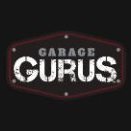-
Welcome to Auto Parts Forum
Whether you are a veteran automotive parts guru or just someone looking for some quick auto parts advice, register today and start a new topic in our forum. Registration is free and you can even sign up with social network platforms such as Facebook, X, and LinkedIn.
#AskAGuru : Jeep No Start
-
Similar Topics
-
By Counterman
link hidden, please login to view announced 10 new part numbers that cover over 3,145,000 applications and model years 2014-2024. Anchor said the below part numbers, which are in stock and available for immediate delivery, “represent excellent sales opportunities.” For more details on Anchor’s complete program availability, contact your local sales representative or call Anchor’s customer service department direct at 1-888-444-4616.
Anchor Industries will be exhibiting at AAPEX 2024, at booth A4434.
The post
link hidden, please login to view appeared first on link hidden, please login to view.
link hidden, please login to view -
By Phil
I am looking to buy a clutch for a 2L diesel Jeep renegade. It’s Sm65RWW vin number 1C4BU0000FPC29385.
1. Does anyone know of anything that would fit this that is available?
2. Is this the correct vin number?
-
By NAPA
The Battle of the Bay at East Bay Raceway Park in Tampa marked the opening of the High Limit Racing season, and Brad Sweet and the
link hidden, please login to view No. 49 team of Kasey Kahne Racing arrived intent to make their mark on the points standings from the start.
With 56 cars in attendance for the first night at East Bay, the NAPA No. 49 hit the top of the charts in qualifying with a lap time of 12.550 seconds. Heat race action followed, and the Big Cat battled his way from fourth to third, punching his ticket to the dash by being the fastest car in his heat. In the dash, Sweet showed consistent speed by charging from third to second.
The action on night one of the Battle at the Bay truly heated up during the evening’s feature race. Despite starting strong in second place, the NAPA driver faced formidable competition and slid back in the field. The five-time World of Outlaws champion showed his determination though, and he fought his way to a fourth-place finish.
That was just the beginning for the NAPA team. Because Sweet secured a fourth-place finish in Monday’s preliminary event, he was automatically locked into the heat races on night two, bypassing qualifying. This placed him fourth to start in Heat Race 4, where he revealed the speed of the NAPA machine on the 1/3-mile oval. Sweet charged to the lead, winning his heat and placing himself first to start the dash.
Sweet took charge in the seven-lap dash and never looked back, earning the win. Finally, the 30-lap A-main took the green flag to mark the final race of the two-day event. Launching the NAPA Auto Parts No. 49 like a rocket, Sweet quickly caught the tail of the field. Competitor Tyler Courtney managed to sneak by the Big Cat for the lead, and Sweet lost another spot after a tough battle. He brought the No. 49 machine to the checkered flag in third, earning a spot on the East Bay podium.
Next up for Sweet and the NAPA team is Deuces Wild at Golden Isles Speedway in Waynesville, GA.
Start / Finish:
Monday, Feb. 12: 2 / 4
Tuesday, Feb. 13: 1 / 3
Points Standing / Total: 1st / 133 pts.
Next Race: Thursday, Feb. 22, Golden Isles Speedway, Waynesville, GA
How to Watch or Listen:
link hidden, please login to view NAPA:
link hidden, please login to viewBrad Sweet: link hidden, please login to view
Kasey Kahne Racing: link hidden, please login to view The post
link hidden, please login to view appeared first on link hidden, please login to view.
link hidden, please login to view -
-





Recommended Posts
Join the conversation
You can post now and register later. If you have an account, sign in now to post with your account.
Note: Your post will require moderator approval before it will be visible.